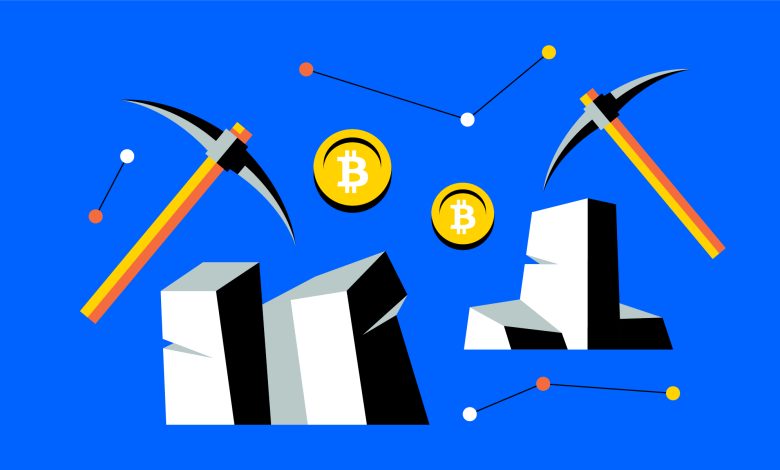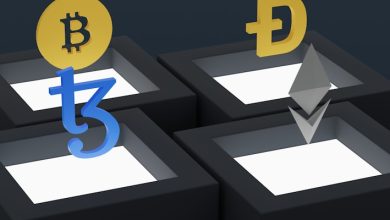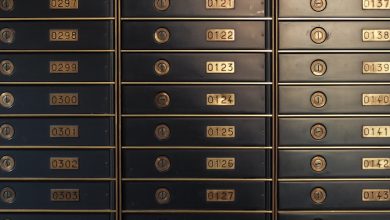The Basics of Crypto Mining and How to Get Started

- Understanding the concept of cryptocurrency mining
- The role of miners in the cryptocurrency network
- Choosing the right hardware for crypto mining
- Setting up a mining rig at home
- Joining a mining pool for increased efficiency
- Managing electricity costs and profitability in crypto mining
Understanding the concept of cryptocurrency mining
Cryptocurrency mining is the process of validating transactions on a blockchain network by solving complex mathematical problems using computer hardware. This process helps secure the network and ensures the integrity of the transactions. Miners are rewarded with newly minted coins for their efforts in verifying transactions and adding them to the blockchain.
To start mining cryptocurrency, you will need specialized hardware such as ASIC miners or GPUs, depending on the algorithm used by the cryptocurrency you want to mine. Additionally, you will need to join a mining pool or mine solo, depending on your mining capabilities and preferences. Joining a mining pool allows you to combine your resources with other miners to increase your chances of successfully mining a block and receiving rewards.
It is important to note that cryptocurrency mining requires a significant amount of electricity to power the mining hardware and keep it running 24/7. As a result, mining can be costly, and it is essential to consider the electricity costs when deciding to start mining. Additionally, the mining difficulty of most cryptocurrencies increases over time, making it harder to mine coins and earn rewards.
Overall, cryptocurrency mining is a competitive and resource-intensive process that requires specialized hardware, electricity, and technical knowledge. However, with the right equipment and dedication, mining can be a profitable venture for those willing to invest the time and resources into it.
The role of miners in the cryptocurrency network
The role of miners in the cryptocurrency network is crucial to the operation and security of the system. Miners are responsible for validating transactions and adding them to the blockchain, which is a decentralized ledger that records all transactions across the network. This process involves solving complex mathematical problems using computational power, known as proof of work.
Miners compete with each other to solve these puzzles, and the first one to do so is rewarded with newly minted coins and transaction fees. This incentivizes miners to continue participating in the network and ensures the integrity of the blockchain. Without miners, the cryptocurrency network would not be able to function properly, as there would be no one to verify transactions and secure the network against potential attacks.
Overall, miners play a vital role in maintaining the decentralized nature of cryptocurrencies and ensuring that transactions are processed efficiently and securely. Their efforts help to keep the network running smoothly and enable users to send and receive digital assets with confidence.
Choosing the right hardware for crypto mining
When it comes to **choosing the right hardware for crypto mining**, it is essential to consider several factors to ensure optimal performance and profitability. The most crucial component of a mining rig is the graphics processing unit (**GPU**), which is responsible for solving complex mathematical algorithms to validate transactions on the blockchain. **GPUs** are preferred over central processing units (**CPUs**) due to their higher hash rates and efficiency in mining cryptocurrencies such as Bitcoin and Ethereum.
In addition to **GPUs**, miners also need a reliable power supply unit (**PSU**) to ensure stable operation and prevent any potential damage to the hardware. It is recommended to invest in a high-quality **PSU** with sufficient wattage to support the power requirements of the mining rig. Moreover, cooling systems such as fans or liquid cooling solutions are essential to prevent overheating and prolong the lifespan of the hardware components.
Another critical factor to consider when selecting hardware for crypto mining is the motherboard. **Motherboards** with multiple **PCIe** slots are ideal for building a mining rig with multiple **GPUs**. It is also important to choose a **motherboard** that is compatible with the chosen **GPUs** and other components to ensure seamless integration and optimal performance.
Lastly, miners should also consider the storage and memory requirements of their mining rig. **Solid-state drives (SSDs)** are preferred over traditional hard disk drives (**HDDs**) for faster boot times and improved system responsiveness. Additionally, **RAM** plays a crucial role in mining operations, as it allows for faster data processing and improved overall performance.
In conclusion, selecting the right hardware for crypto mining is essential for maximizing profitability and efficiency. By choosing high-quality components such as **GPUs**, **PSUs**, **motherboards**, storage devices, and memory, miners can build a reliable mining rig that can effectively mine cryptocurrencies and generate profits over time.
Setting up a mining rig at home
Setting up a mining rig at home can be a rewarding endeavor for those looking to get into the world of cryptocurrency mining. To begin, you will need to gather all the necessary components to build your rig. This includes a powerful graphics processing unit (GPU), a motherboard, a power supply unit (PSU), a central processing unit (CPU), memory (RAM), storage, and cooling fans.
Once you have all the components, you will need to assemble them into a functional mining rig. Start by installing the CPU onto the motherboard, followed by the RAM and storage. Next, connect the GPU to the motherboard and the PSU. Make sure to properly secure all components and ensure that everything is connected correctly.
After assembling the rig, you will need to install the necessary mining software. There are various mining programs available, such as CGMiner and EasyMiner, that you can use to start mining cryptocurrencies. Make sure to configure the software with the appropriate settings for optimal mining performance.
Finally, you will need to connect your mining rig to the internet and join a mining pool. Mining pools allow miners to combine their computational resources to increase their chances of successfully mining a block. Once you have joined a mining pool, you can start mining cryptocurrencies and potentially earn rewards for your efforts.
Joining a mining pool for increased efficiency
Joining a mining pool can significantly increase the efficiency of your crypto mining operations. By pooling resources with other miners, you can collectively solve complex algorithms and earn rewards more consistently. This approach is especially beneficial for small-scale miners who may not have the resources to compete with larger mining operations on their own.
When you join a mining pool, you will typically be required to pay a small fee, which is used to cover the costs of running the pool. In return, you will receive a share of the rewards based on the amount of computational power you contribute to the pool. This can help you earn a more stable income from your mining activities, as rewards are distributed more evenly among pool members.
Another advantage of joining a mining pool is that it can help you reduce the variance in your earnings. When mining solo, there is a higher chance of experiencing long periods without receiving any rewards, followed by sudden windfalls. By pooling your resources with other miners, you can smooth out these fluctuations and earn a more predictable income over time.
Overall, joining a mining pool is a smart strategy for increasing the efficiency and profitability of your crypto mining operations. It allows you to leverage the collective power of a group of miners to earn rewards more consistently and reduce the volatility of your earnings. If you are serious about crypto mining, joining a mining pool is definitely worth considering.
Managing electricity costs and profitability in crypto mining
Managing electricity costs is a crucial aspect of running a profitable crypto mining operation. Electricity expenses can quickly eat into your profits if not carefully monitored and controlled. Here are some tips to help you manage electricity costs effectively:
- Opt for energy-efficient hardware: Choose mining equipment that is known for its energy efficiency to reduce electricity consumption.
- Monitor energy usage: Keep track of how much electricity your mining operation is using on a regular basis to identify any spikes or inefficiencies.
- Consider renewable energy sources: If possible, use renewable energy sources such as solar or wind power to reduce reliance on traditional electricity grids.
- Implement smart cooling solutions: Proper cooling is essential for mining equipment, but inefficient cooling systems can lead to higher electricity costs. Invest in smart cooling solutions to optimize energy usage.
- Adjust mining schedules: Consider mining during off-peak hours when electricity rates are lower to save on costs.
By implementing these strategies, you can effectively manage electricity costs and improve the profitability of your crypto mining operation. Remember that every bit of savings on electricity expenses adds up to increase your overall profitability in the long run.



